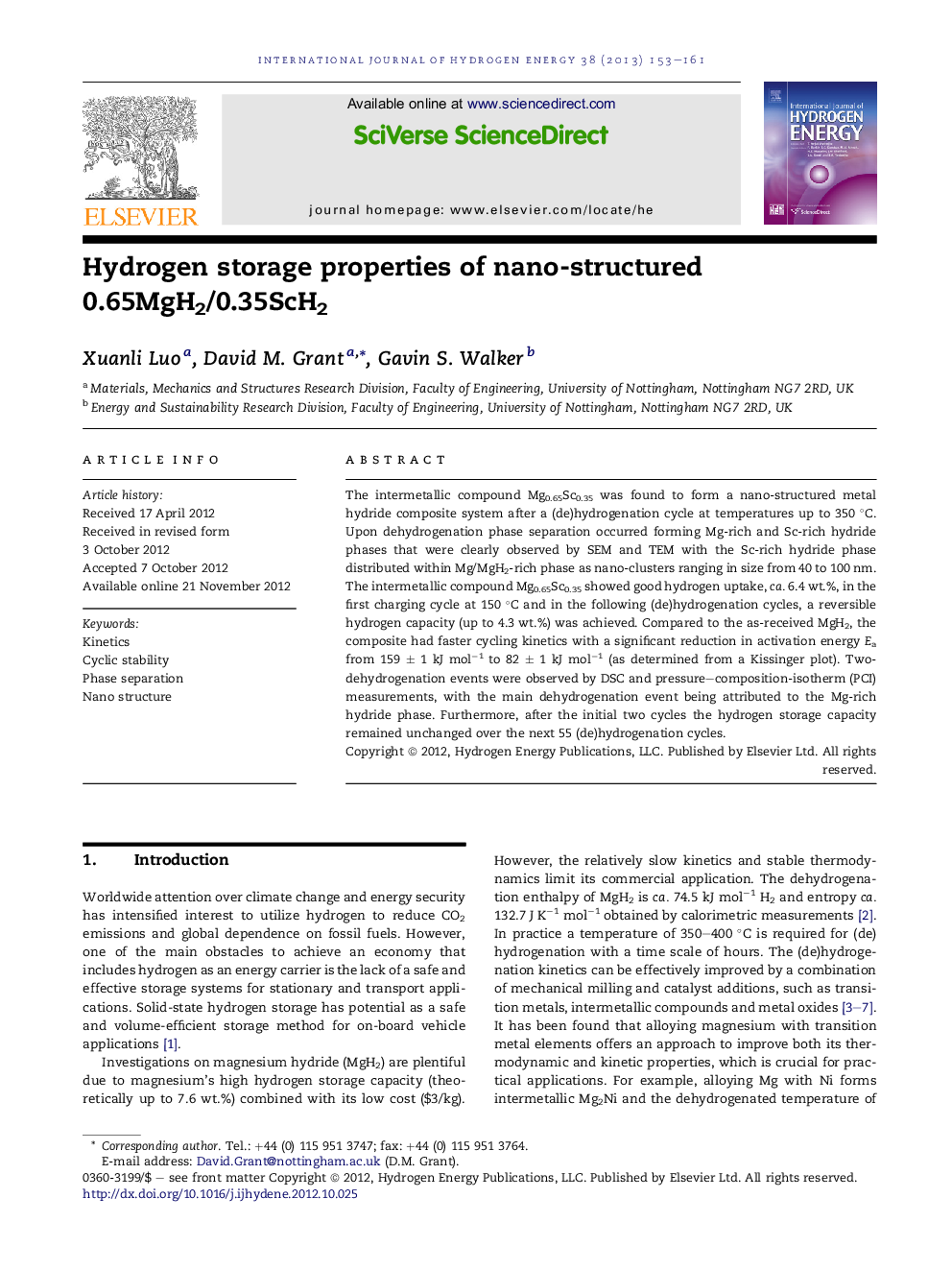| Article ID | Journal | Published Year | Pages | File Type |
|---|---|---|---|---|
| 1274359 | International Journal of Hydrogen Energy | 2013 | 9 Pages |
The intermetallic compound Mg0.65Sc0.35 was found to form a nano-structured metal hydride composite system after a (de)hydrogenation cycle at temperatures up to 350 °C. Upon dehydrogenation phase separation occurred forming Mg-rich and Sc-rich hydride phases that were clearly observed by SEM and TEM with the Sc-rich hydride phase distributed within Mg/MgH2-rich phase as nano-clusters ranging in size from 40 to 100 nm. The intermetallic compound Mg0.65Sc0.35 showed good hydrogen uptake, ca. 6.4 wt.%, in the first charging cycle at 150 °C and in the following (de)hydrogenation cycles, a reversible hydrogen capacity (up to 4.3 wt.%) was achieved. Compared to the as-received MgH2, the composite had faster cycling kinetics with a significant reduction in activation energy Ea from 159 ± 1 kJ mol−1 to 82 ± 1 kJ mol−1 (as determined from a Kissinger plot). Two-dehydrogenation events were observed by DSC and pressure–composition-isotherm (PCI) measurements, with the main dehydrogenation event being attributed to the Mg-rich hydride phase. Furthermore, after the initial two cycles the hydrogen storage capacity remained unchanged over the next 55 (de)hydrogenation cycles.
► Nano-structured 0.65MgH2/0.35ScH2 hydrogen storage system. ► Derived from phase separation of Mg0.65Sc0.35 alloy. ► The phase separation resulting in uptakes of the order of a few minutes. ► Kinetics with significant reduction in activation energy of 82 ± 1 kJ mol−1. ► High reversible hydrogen capacity (up to 4.2 wt.%) and good cyclical stability.
